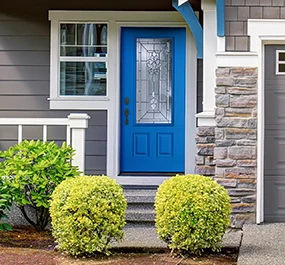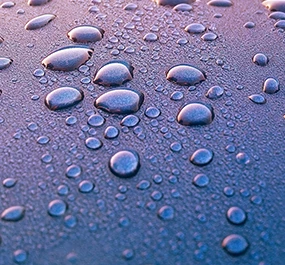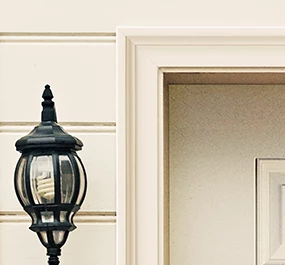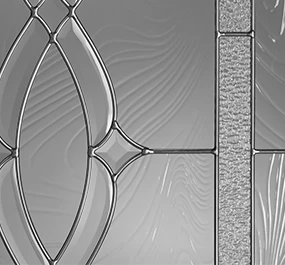When your cache bogs down your browser or dust impacts the performance of your keyboard, you perform maintenance on each by cleaning them. Much like your computer—and many other important aspects of your everyday life, such as your vehicle—maintenance on your home is essential for it to remain in working order.
The rooms and spaces you spend a significant amount of time in will naturally remain at the forefront of your mind when it comes to your mental checklist of home maintenance, but don’t forget about exterior and front door maintenance.
Problems outside can have the same adverse impact on your quality of life that problems inside do, so remember to focus energy on your home’s exterior, too. When it comes to your exterior door, Plastpro’s fiberglass doors can help cut down on required maintenance thanks to their durability. The same holds true for Plastpro’s door accessories, which will also withstand the test of time alongside the door.
Why is Home Maintenance So Important?
Being proactive with an eye towards regular home maintenance is a better approach to home ownership than being reactive when problems arise. Routinely checking in with your living space could help you prolong the lifespan of crucial home components like windows, doors, floors, and more. These small fixes and tune-ups can successfully lower the cost of repairs or help you avoid unnecessary repairs completely.
Sure, eventually things like doors will need replacing, but keeping these things in good condition can allow you to take projects on your own terms instead of spending valuable time, energy, and money on the latest surprise problem.
The overall safety and comfort of your home benefits from routine maintenance, too. Ensuring features like stairs, banisters, interior doors, electrical outlets, electronics, appliances, light fixtures, and fans are safe and functional is important for your indoor safety, while the condition of your windows, doors, siding, and roof are imperative for keeping what’s outdoors from intruding into your home.
Keeping the outside and inside of a home up to date has a few desirable secondary effects as well: things you’ve serviced, repaired, and replaced will help preserve the value of the home by keeping it in new or like new condition, maintain a look of newness throughout the property, and introduce the latest industry standard technology and best practices into your home. All of these additional perks can do wonders for the quality of life enjoyed by you and your family.
Home maintenance is so important because it can help mitigate the wear and tear that life puts on a home. Paying attention to your home’s needs and addressing them can go a long way towards keeping it like new.
The Benefits of Proactive Home Maintenance
Even though the average person only lives in a house for approximately 8 years, that’s more than enough time for poor maintenance habits to cause some big problems.
As stated earlier, being reactive with your home repairs and routine checkups can cause more problems compared to taking a proactive approach and addressing potential issues before they become larger headaches.
For example, routine cleaning of gutters can help avoid any clogs at inopportune times and regular door inspections can set a potential problem right before it takes hold, drastically impacting your ability to truly fix the issue. This same basic principle can be applied to almost any aspect of your home—regular visual inspections of home features, periodic cleaning of spots where clutter or backup can become a problem, and repairs to smaller issues that are caught before they balloon into emergencies can save you time and inconvenience while big projects are completed, save money on large-scale repairs, and save you stress in the long run.
The stress that comes along with large home projects may be reason enough to stick with routine maintenance. The amount of money that goes into a large home project can induce stress if you and your family aren’t ready to make that kind of spend, while inconvenience and even possible displacement can impact your everyday life. Routine maintenance is so important for so many reasons, but your mental and financial health may be chief among them.
Tips and Tricks for Effective Home Maintenance
Regardless of whether you’re the first owner of a home, or you may take on a property as a fixer-upper later in its lifespan, the need for regular repair won’t be any less prevalent. Since this topic will always be relevant no matter which stage of homeownership you’re in, it may be handy to have a summary list of a few important places where DIY home maintenance is key.
Interiors
When you think of maintenance, you probably consider aspects on the outside of the home since they’re most susceptible to the elements. However, in addition to containing many of your creature comforts, much of the interior has a direct impact on how the outside world impacts your indoor living.
First, if you find that your home is colder than usual or your heating bill is rising, your insulation should be checked for end-of-life replacement. This isn’t an issue you’ll necessarily be able to fix with a DIY solution, but it could be the culprit if your energy bill is going up unexpectedly. Pipes, on the other hand, can give hints as to when they’re outstaying their welcome, so routinely check them to make sure they’re without leaks and they aren’t compromised. Air conditioners and heating systems should also have their filters regularly cleaned and, if necessary, replaced, while an HVAC tune-up session with a local professional can improve performance and increase equipment longevity.
Check floors for cracks or sinking areas, check windows for seals that need replacing, check walls for any moisture, mold, discoloration or other signs of issues, and check that electrical outlets and appliances are able to safely plug in and are operating at maximum efficiency.
Exteriors
From the ground up, regular check-ins with your home exterior will help you keep track of how it’s doing and what evolving issues may require your attention.
Your home’s foundation is extremely important to its overall health—and the cost of repairing a faulty foundation reflects that—so stay on the lookout for signs that a problem is beginning to form. Wood foundations can rot if they’re taking on water damage or infested with termites. Termites may also leave behind piles of wood dust. Brick foundations will crack if they’re deteriorating. Cracks in concrete are a sign of water damage. A trained eye with special equipment may spot other issues that aren’t as readily apparent as these visual cues. If you suspect your home has a foundation issue, be sure to seek a professional.
You can extend the lifespan of your roof by cleaning gutters, replacing lost or damaged materials, and power washing the roof itself. You can also do a visual inspection to make sure roofing materials are intact and in place, or you can ask a contractor to inspect the roof for you. Siding is another material that can be given a quick visual inspection, with missing pieces requiring replacing and holes or cracks requiring a quick, cheap seal job. Routine looks at these parts of your home’s exterior can extend their lifespans and push back purchases that add up to thousands.
Extreme Weather
If you live in a part of the world where extreme weather events can impact your home, it’s best to invest in materials made to withstand the specific kind of weather your home will be subjected to, including weatherproofing your door. It’s also important to conduct visual inspections—and possibly bring a professional to your home—after the weather dissipates.
Maintaining Your Home’s Exterior Doors
Periodically, you should make sure each of your exterior doors open and close without issue, shut flush with your door frame, and don’t allow any air to leak in from outside. Next, inspect the door and look for signs of heavy wear, such as chipping, denting, cracking, or rotting. If repairs can be made, you can save your door from further degradation. Applying coating or paint can also help expand the lifespan of exterior doors. However, all doors will eventually meet the end of their usefulness and require replacement.
Increasing Home Resale Value Through Maintenance
Replacing those doors and keeping them looking like new is a big way to maintain or add to your home’s value. Other ways include making sure important home components like your foundation, interior and exterior walls, roof, and floors are sound and don’t have small problems that turn into big issues.
Maintenance won’t just improve your home’s cosmetic appeal, structural integrity, or overall safety. Routine care can also improve the building’s energy efficiency, an extremely important factor for prospective new homeowners that’ll help them save on energy bills and reduce their impact on the environment. Look at your appliances with an eye towards energy efficiency, too.
Enhance Your Home with Plastpro
With their high energy efficiency ratings and improved durability over other types of exterior doors, fiberglass doors are a great way to add value to your home, improve the cost-effectiveness of your front door, and implement a chance that’ll have you spending less time and money on routine front door maintenance. Find a Plastpro dealer today to explore your options for fiberglass front doors.



